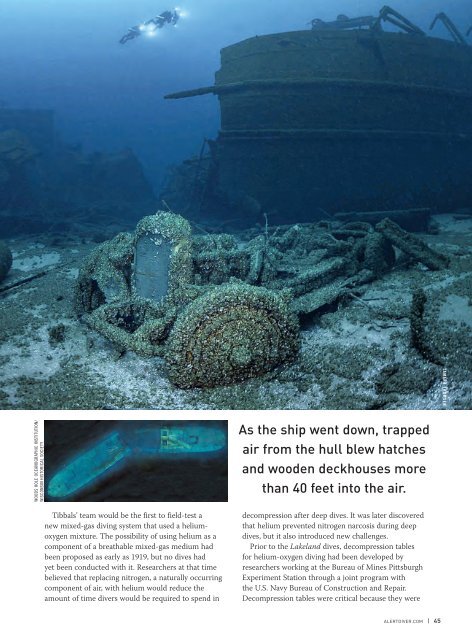AD 2016 Q3
Alert Diver is the dive industry’s leading publication. Featuring DAN’s core content of dive safety, research, education and medical information, each issue is a must-read reference, archived and shared by passionate scuba enthusiasts. In addition, Alert Diver showcases fascinating dive destinations and marine environmental topics through images from the world’s greatest underwater photographers and stories from the most experienced and eloquent dive journalists in the business.
Alert Diver is the dive industry’s leading publication. Featuring DAN’s core content of dive safety, research, education and medical information, each issue is a must-read reference, archived and shared by passionate scuba enthusiasts. In addition, Alert Diver showcases fascinating dive destinations and marine environmental topics through images from the world’s greatest underwater photographers and stories from the most experienced and eloquent dive journalists in the business.
Create successful ePaper yourself
Turn your PDF publications into a flip-book with our unique Google optimized e-Paper software.
TAMARA THOMSEN<br />
WOODS HOLE OCEANOGRAPHIC INSTITUTION/<br />
WISCONSIN HISTORICAL SOCIETY<br />
Tibbals’ team would be the first to field-test a<br />
new mixed-gas diving system that used a heliumoxygen<br />
mixture. The possibility of using helium as a<br />
component of a breathable mixed-gas medium had<br />
been proposed as early as 1919, but no dives had<br />
yet been conducted with it. Researchers at that time<br />
believed that replacing nitrogen, a naturally occurring<br />
component of air, with helium would reduce the<br />
amount of time divers would be required to spend in<br />
As the ship went down, trapped<br />
air from the hull blew hatches<br />
and wooden deckhouses more<br />
than 40 feet into the air.<br />
decompression after deep dives. It was later discovered<br />
that helium prevented nitrogen narcosis during deep<br />
dives, but it also introduced new challenges.<br />
Prior to the Lakeland dives, decompression tables<br />
for helium-oxygen diving had been developed by<br />
researchers working at the Bureau of Mines Pittsburgh<br />
Experiment Station through a joint program with<br />
the U.S. Navy Bureau of Construction and Repair.<br />
Decompression tables were critical because they were<br />
ALERTDIVER.COM | 45









